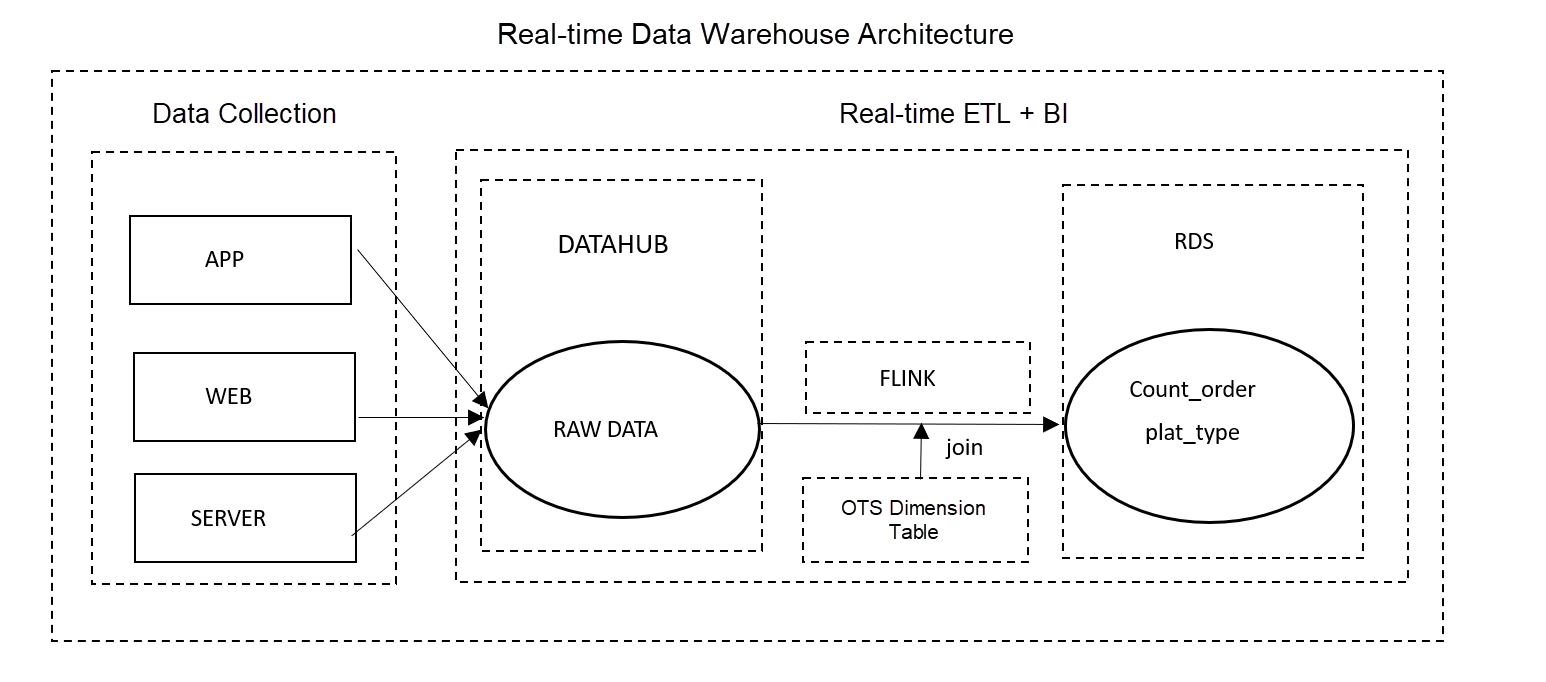Step up the digitalization of your business with Alibaba Cloud 2020 Double 11 Big Sale! Get new user coupons and explore over 16 free trials, 30+ bestselling products, and 6+ solutions for all your needs!
Finance is the core of the modern economy. China's financial industry has continued to develop in the market-oriented reform and open up with the rapid growth of financial resources. During the development, financial stability is directly related to the future of national economic development because the financial industry can act as the barometer. Based on the objective analysis of the status of China's financial industry, the exploration of its development trends are helpful to eliminate hidden dangers. By doing so, the financial industry can develop in a healthy and orderly direction.
An insurance company has developed a financial app where it delivers its insurance advertisements and offers preferential activities. Users can get services, such as buying insurance products, through the app.
The business construction of the company mentioned above involves two aspects:
For Operation Personnel:
For Business Manager:
The background system monitors changes in the insured amount of key users. Then, for those key users with large changes in the insured amount, the system sends their information to the business manager. This helps the business manager retain these users.

Analyzing Operational Data:
Monitoring User Behavior:
Analyzing User Behavior:
In this scenario, the total number of insured people and the total insurance premium per hour is calculated.
After insuring, an order form will be generated, which includes the user's ID, name, order number, etc. Apache Flink reads the information of the order in real-time and uses the where function to filter the data that is generated beyond the current hour. Then, Apache Flink uses the last_value function to obtain the order information of each user by groups according to users' ID. Finally, the total insurance premiums and the total number of insured people are aggregated and counted by the hour.
Input Table
CREATE TABLE user_order
(
id bigint comment 'User id'
,order_no varchar comment 'Order number'
,order_type bigint comment 'Order type'
,pay_time bigint comment 'Payment time'
,order_price double comment 'Order price'
,customer_name varchar comment 'User name'
,customer_tel varchar comment 'User call'
,certificate_no varchar comment 'Certificate number'
,gmt_created bigint comment 'Creation time'
,gmt_modified bigint comment 'Modification time'
,account_payble double comment 'Payable amount'
) WITH (
type='datahub',
topic='user_order'
...
)Output Table
CREATE TABLE hs_order (
biz_date varchar COMMENT 'yyyymmddhh'
,total_premium DOUBLE COMMENT 'Total premiums'
,policy_cnt BIGINT COMMENT 'Keep the singular number'
,policy_holder_cnt BIGINT COMMENT 'Number of insured persons'
,PRIMARY KEY (biz_date)
) WITH
(
type='rds',
tableName='adm_pfm_zy_order_gmv_msx_hs'
...
)
;Business Code
create view last_order
as
select
id as id
,last_value(order_no) as order_no
,last_value(customer_tel) as customer_tel
,last_value(gmt_modified) as gmt_modified
,last_value(account_payble) as account_payble
from user_order
where gmt_modified >= cast(UNIX_TIMESTAMP(FROM_UNIXTIME(UNIX_TIMESTAMP(), 'yyyy-MM-dd'), 'yyyy-MM-dd')*1000 as bigint)
group by id
;insert into hs_order
select
biz_date
,cast (total_premium as double) as total_premium
,cast (policy_cnt as bigint) as policy_cnt
,cast (policy_holder_cnt as bigint) as policy_holder_cnt
from (
select
from_unixtime(cast(gmt_modified/1000 as bigint),'yyyyMMddHH') as biz_date
,sum(coalesce(account_payble,0)) as total_premium
,count(distinct order_no) as policy_cnt
,count(distinct customer_tel) as policy_holder_cnt
from last_order a
group by
from_unixtime(cast(gmt_modified/1000 as bigint),'yyyyMMddHH')
)a
;In this scenario, key users with large changes in the insurance amount are being monitored, for example, the total insurance amount changes over 15%.
Apache Flink reads new order data created by users in real-time. New orders contain users' ID and the current insured amount. Unsaved orders are filtered with the where function. As the dimension table stores the data of concerned key users, such as the original insurance amount, user ID in new orders will be used for joint queries with data in the dimension table. If the user is found in the dimension table and the total insured amount decreases by more than 15%, detailed information about the user will be sent to the business manager. The insured amount and insurance information about the user will also be updated in the dimension table.
Input Table
create table update_info
(
id bigint comment 'User id'
,channel varchar comment 'Channel number'
,open_id varchar comment 'Order id'
,event varchar comment 'Event type'
,now_premium varchar comment 'Current insured amount'
,creator varchar comment 'Creator'
,modifier varchar comment ''
,gmt_modified bigint comment 'Modification time'
,now_info varchar comment 'Current insurance information'
) with (
type = 'datahub',
topic = 'dh_prd_dm_account_wechat_trace'
...
);Dimension Table
create table raw_info
(
id bigint comment 'User id'
,raw_premium varchar comment 'Original insured amount'
,raw_info varchar comment 'Original insurance information'
,PRIMARY KEY(id)
,PERIOD FOR SYSTEM_TIME
) WITH (
type='ots',
tableName='adm_zy_acct_sub_wechat_list'
...
);Output Table
create table update_info
(
id bigint comment 'User id'
,raw_info varchar comment 'Original insurance information'
,now_info varchar comment 'Current insurance information'
,raw_premium varchar comment 'Original insured amount'
,now_premium varchar comment 'Current insured amount'
,PRIMARY KEY(id)
) WITH (
type='rds',
tableName='wechat_activity_user'
...
);Business Code
create view info_join as
select
t1.id as id
,t2.raw_info as raw_info
,t1.now_info as now_info
,t2.raw_premium as raw_premium
,t1.now_premium as now_premium
from update_info t1
inner join raw_info FOR SYSTEM_TIME AS OF PROCTIME() as t2
on t1.id = t2.id ;insert into update_info
select
id as id
,raw_info as raw_info
,now_info as now_info
,raw_premium as raw_premium
,now_premium as now_premium
from info_join where now_premium<raw_premium*0.85
;insert into raw_info
select
id as id
,now_premium as raw_premium
,now_info as raw_info
from info_join
;In this scenario, the name and type of the last-visited page are recorded as the user's feature values.
Apache Flink reads the logs of users' browsing activities, including the user ID, page name, and page type. Through grouping users by user ID and device ID, Apache Flink uses the last_value function to obtain the name and type of the last-visited page. The information collected will be entered into RDS as the input data of the recommendation system. Thus, relevant advertisements will be presented to users when logging on to the app next time. By doing so, the click-through rate of advertisements and the possibility of making orders will be improved.
Input Table
create table user_log
(
log_time bigint comment 'Log collection date (Linux time)'
,device_id varchar comment 'Device id'
,account_id varchar comment 'Account id'
,bury_point_type varchar comment 'Page type or tracking type'
,page_name varchar comment 'Page name or tracking point level 1 directory'
) WITH (
type = 'datahub',
topic = 'edw_zy_evt_bury_point_log'
...
);Output Table
insert into user_last_log
select
account_id
,device_id
,last_value(bury_point_type) as bury_point_type
,last_value(page_name) as page_name
from user_log
where account_id is not null
group by account_id,device_idBusiness Code
insert user_last_log
select
account_id
, device_id
,last_value(bury_point_type) as bury_point_type
,last_value(page_name) as page_name
From user_log
Where account_id is not null
group account_id,device_idLearn more about Alibaba Cloud Realtime Compute for Apache Flink
Alibaba Cloud Realtime Compute for Apache Flink Provides Solutions for the Financial Industry

148 posts | 41 followers
FollowApache Flink Community China - March 26, 2021
Apache Flink Community China - November 5, 2020
Apache Flink Community China - March 29, 2021
Alibaba Clouder - October 29, 2020
ApsaraDB - February 29, 2024
Apache Flink Community China - January 11, 2021

148 posts | 41 followers
Follow Black Friday Cloud Services Sale
Black Friday Cloud Services Sale
Get started on cloud with $1. Start your cloud innovation journey here and now.
Learn More Financial Services Solutions
Financial Services Solutions
Alibaba Cloud equips financial services providers with professional solutions with high scalability and high availability features.
Learn More FinTech on Cloud Solution
FinTech on Cloud Solution
This solution enables FinTech companies to run workloads on the cloud, bringing greater customer satisfaction with lower latency and higher scalability.
Learn MoreMore Posts by Apache Flink Community